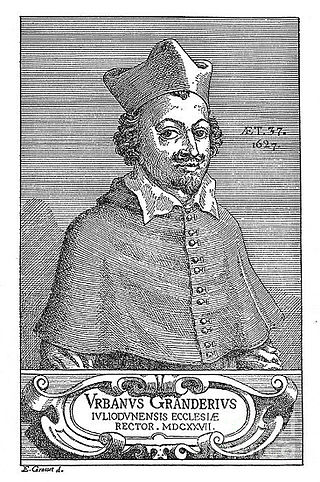
Urbain Grandier was a French Catholic priest who was burned at the stake after being convicted of witchcraft, following the events of the so-called "Loudun possessions". Most modern commentators have concluded that Grandier was the victim of a politically motivated persecution led by the powerful Cardinal Richelieu.

There have been various attempts at the classification of demons within the contexts of classical mythology, demonology, occultism, and Renaissance magic. These classifications may be for purposes of traditional medicine, exorcisms, ceremonial magic, witch-hunts, lessons in morality, folklore, religious ritual, or combinations thereof. Classifications might be according to astrological connections, elemental forms, noble titles, or parallels to the angelic hierarchy; or by association with particular sins, diseases, and other calamities; or by what angel or saint opposes them.

The Devils is a 1971 British historical drama film written, produced and directed by Ken Russell, and starring Oliver Reed and Vanessa Redgrave. A dramatised historical account of the fall of Urbain Grandier, a 17th-century Roman Catholic priest accused of witchcraft after the possessions in Loudun, France, the plot also focuses on Sister Jeanne des Anges, a sexually repressed nun who incites the accusations.

Mother Joan of the Angels is a 1961 Polish art film on demonic possession, directed by Jerzy Kawalerowicz, based on a novella of the same title by Jarosław Iwaszkiewicz, loosely based on the 17th century Loudun possessions. The film won the Special Jury Prize at the 1961 Cannes Film Festival.
The possessions at Louviers, similar to those in Aix-en-Provence, occurred at the Louviers Convent in 1647. As with both the Aix case and its later counterpart in Loudun, the conviction of the priests involved hinged on the confessions of supposed possessed demoniacs.

The Loudun possessions, known in French as the Possessed of Loudun Affair, was a notorious witchcraft trial that took place in Loudun, Kingdom of France, in 1634. A convent of Ursuline nuns said they had been visited and possessed by demons. Following an investigation by the Catholic Church, a local priest named Urbain Grandier was accused of summoning the evil spirits. He was eventually convicted of the crimes of sorcery and burned at the stake.
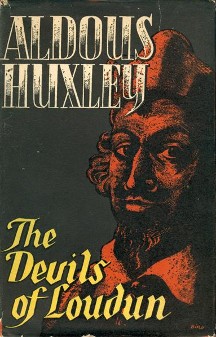
The Devils of Loudun is a 1952 non-fiction novel by Aldous Huxley.
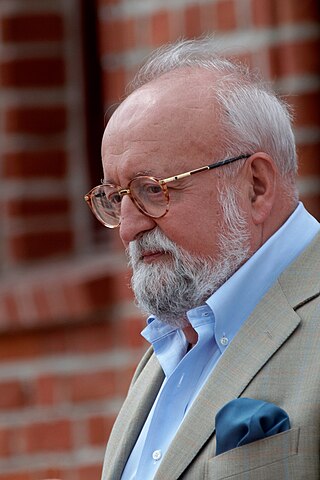
Die Teufel von Loudun is an opera in three acts written in 1968 and 1969 by Polish composer Krzysztof Penderecki, and then revised in 1972 and 1975. It has a German libretto by the composer, based on John Whiting's dramatization of Aldous Huxley's book of the same name.
Jean-Joseph Surin was a French Jesuit mystic, preacher, devotional writer and exorcist. He is remembered for his participation in the exorcisms of Loudun in 1634-37.

Sébastien Michaelis was a French inquisitor and prior of the Dominican order who lived during the late 16th and early 17th centuries. His Histoire admirable de la possession et conversion d'une penitente (1612) includes a classification of demons which has passed into general use in esoteric literature.
The Sisters of the Blessed Sacrament and Our Lady is an enclosed religious order and a reform of the Dominican Order devoted to the perpetual adoration of the Blessed Sacrament. The congregation was founded in Marseille in 1659 by a Dominican priest, Father Anthony Le Quieu.
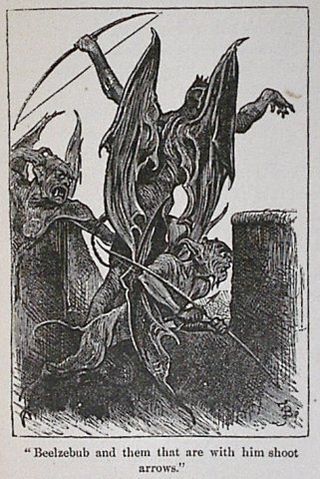
Beelzebub, also spelled Beelzebul or Belzebuth, is a name derived from a Philistine god, formerly worshipped in Ekron, and later adopted by some Abrahamic religions as a major demon. The name Beelzebub is associated with the Canaanite god Baal.
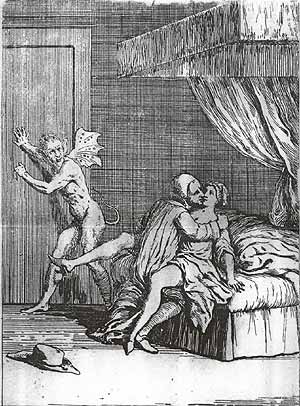
Catherine Cadière, or Marie-Catherine Cadière,, was an alleged French witch. The trial of Catherine Cadiére in 1731 is one of the most famous of its kind in French history, and have been referred to many times in literature, notably in the pornographic novel Thérèse philosophe.

The Paisley witches, also known as the Bargarran witches or the Renfrewshire witches, were tried in Paisley, Renfrewshire, central Scotland, in 1697. Eleven-year-old Christian Shaw, daughter of the Laird of Bargarran, complained of being tormented by some local witches; they included one of her family's servants, Catherine Campbell, whom she had reported to her mother after witnessing her steal a drink of milk.
The Devils is a play, commissioned by Sir Peter Hall for the Royal Shakespeare Company and written by British dramatist John Whiting, based on Aldous Huxley's 1952 book, The Devils of Loudun.
The Channel Islands Witch Trials were a series of witch trials in the Channel Islands of Jersey and Guernsey between 1562 and 1661.

Jeanne des Anges, also known as Jeanne de Belcier, was a French Ursuline nun in Loudun, France. She became mother superior of the convent at a young age, but is chiefly remembered as a central figure in the case of the possessed of Loudun in 1632, which led, after witch trials, to the burning at the stake of the priest Urbain Grandier two years later.

The Witch trials in France are poorly documented, mainly because a lot of the documents of former witch trials have not been preserved, and no number can therefore be given for the executions of witch trials in France or the true extent of them. While there is much secondary information about witch trials in France, the poor state of documentation often makes them hard to confirm.
Witch trials in Latvia and Estonia were mainly conducted by the Baltic German elite of clergy, nobility and burghers against the indigenous peasantry in order to persecute Paganism by use of Christian demonology and witchcraft ideology. In this aspect, they are similar to the Witch trials in Iceland. They are badly documented, as many would have been conducted by the private estate courts of the landlords, which did not preserve any court protocols.
Dreams of Roses and Fire is a novel by the Swedish author Eyvind Johnson published in 1949.











